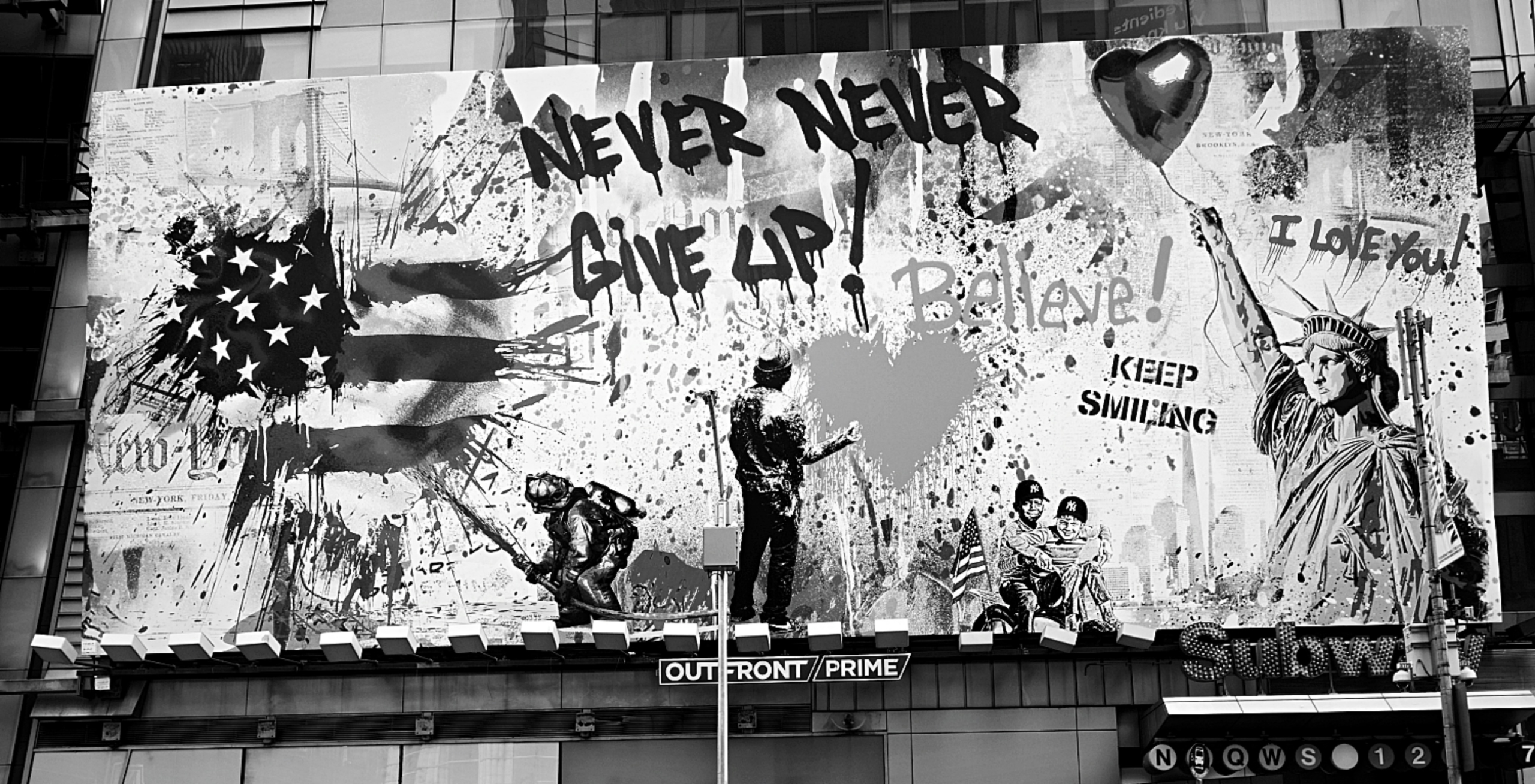Nothing in my lifetime has affected world travel and my daily living than the Covid-19 pandemic. Tragically, it has infected tens of millions, killing over a million worldwide. The illness, caused by the SARS-CoV-2 virus (a type of “coronavirus”) first appeared in China in late 2019. On March 9 NYC Mayor Bill de Blasio announced the first confirmed cases in the City. The virus then grew exponentially and NYC was the worst hot spot in the country. During that month, New York State issued a series of executive orders shutting down non-essential businesses and group gatherings. As a result, the bustling streets of NYC were eerily empty, including Times Square where some were urging religious redemption.

All live entertainment was banned and Broadway theaters were closed indefinitely. The indefatigable food delivery bicyclist became a common sight on the streets.
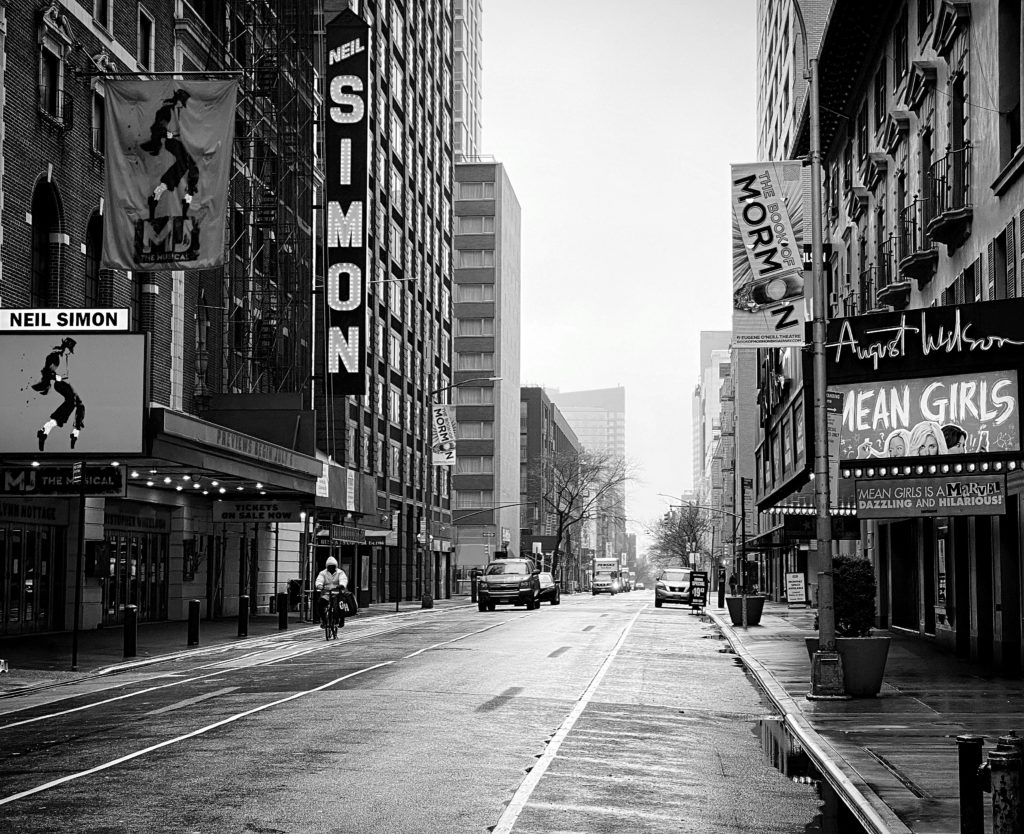
This statue of a man shushing the public (the artist, Jim Rennert, calls it “Listen”) was a lonely figure in the rain on the deserted midtown streets, as corporations closed offices and employees worked at home or were furloughed.

Even the residential neighborhoods had little activity, such as this stretch on Amsterdam Avenue between Morningside Heights and Hamilton Heights, as everyone was sheltering at home.

However the streets had the most speeding ambulances with blaring sirens that I had ever seen or heard.
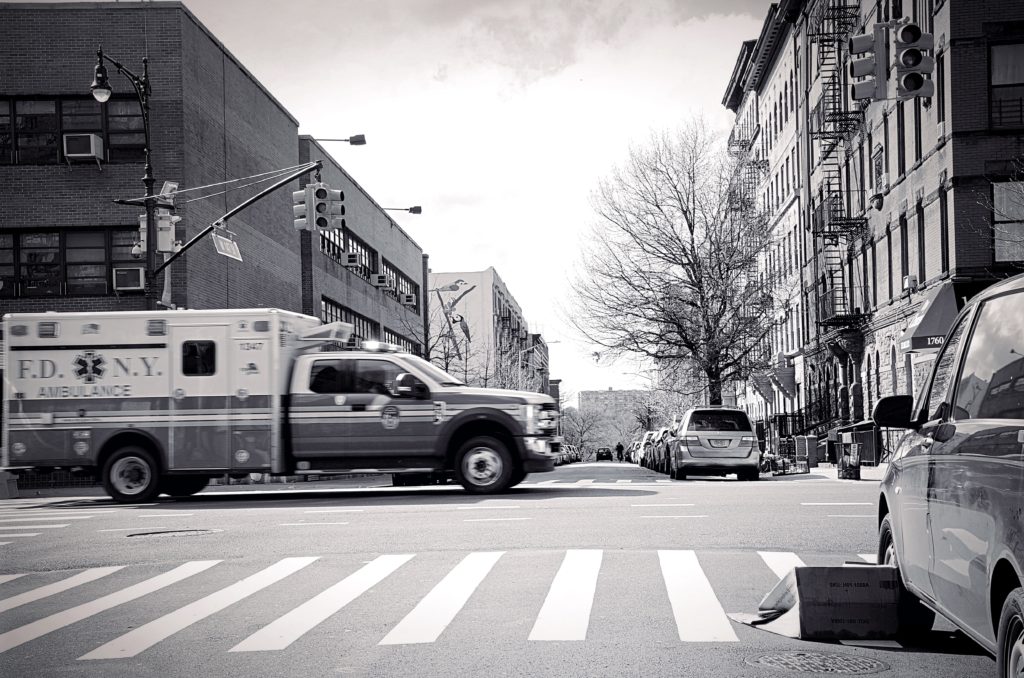
While most businesses were closed, mortuaries were busy.

The subways were the most empty I had ever seen then, also were the most clean as they were closed from 1am to 5am for thorough scrubbing.
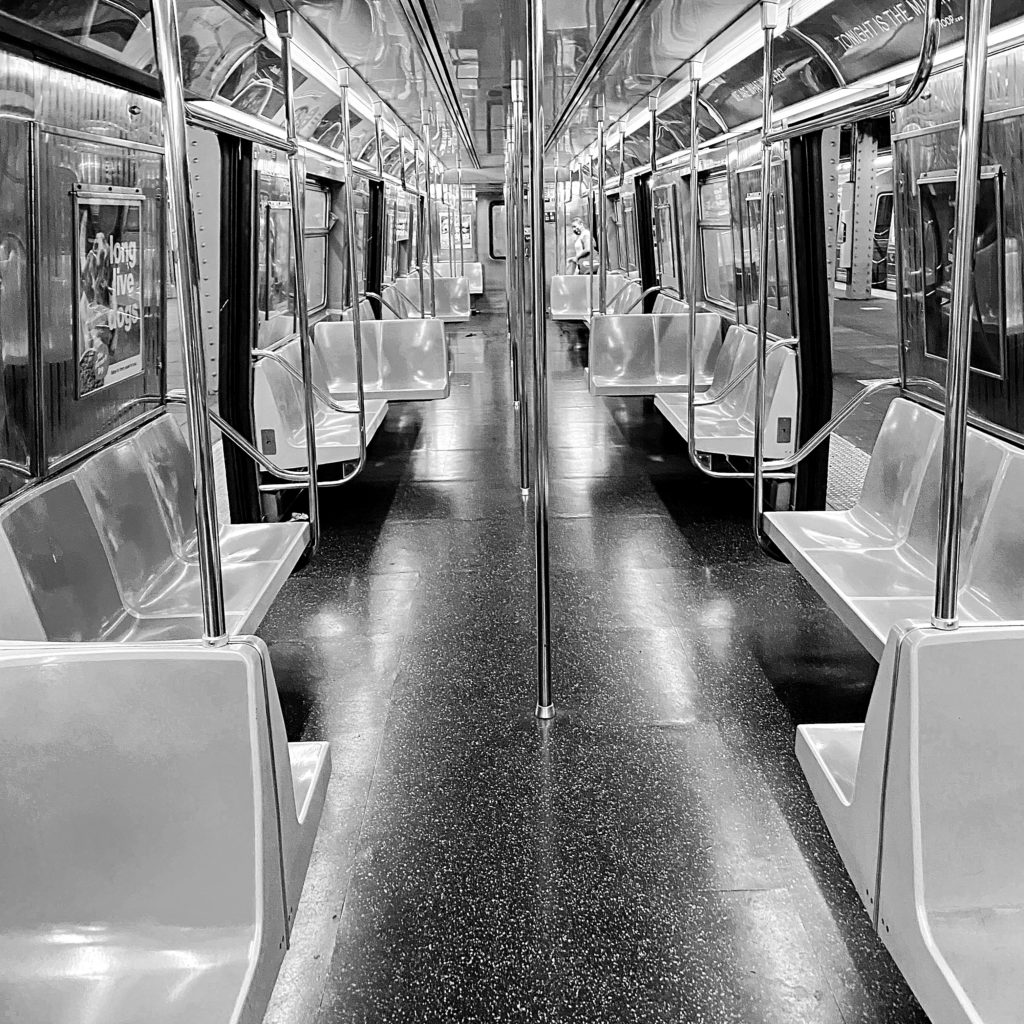
The City eliminated bus fare until August 31 but allowed entry only by the middle door. The aisle was chained a few seats in the front to prevent passengers from sitting close to the driver.
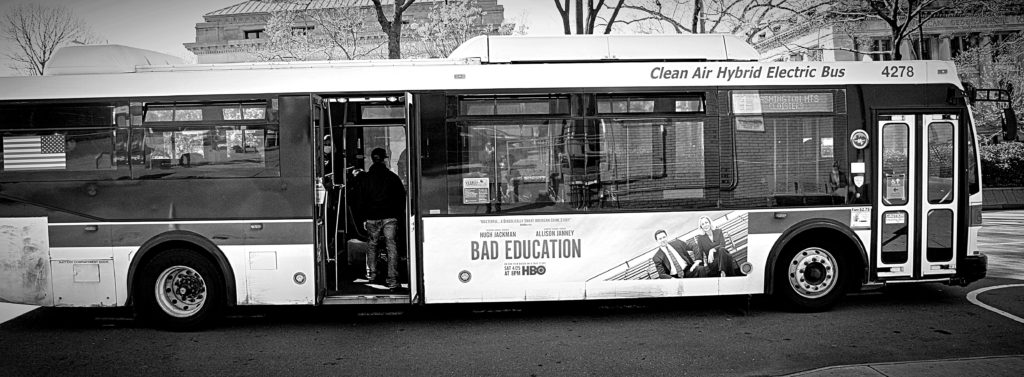
The pop-up street vendors, many from West Africa, started offering masks.
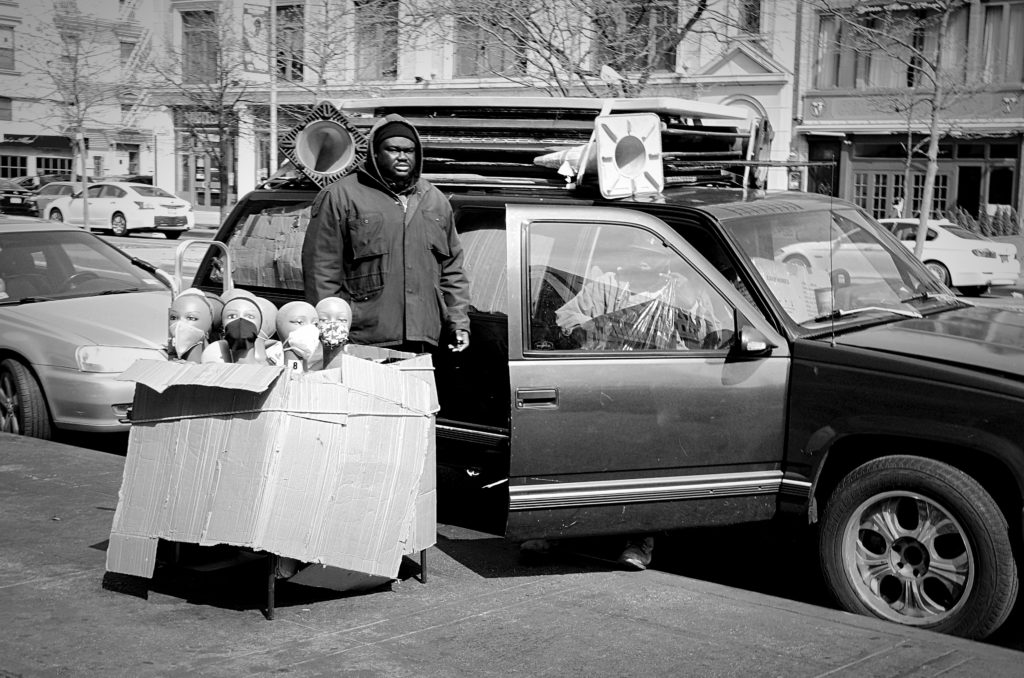
My life had few outdoor experiences. I walked through nearby neighborhoods on a daily basis, sometimes with Khadija. There were few people on the street. However, there was the occasional dog walker, sometimes by a playground devoid of children…

… or a few solitary folks exercising in Riverside Park.
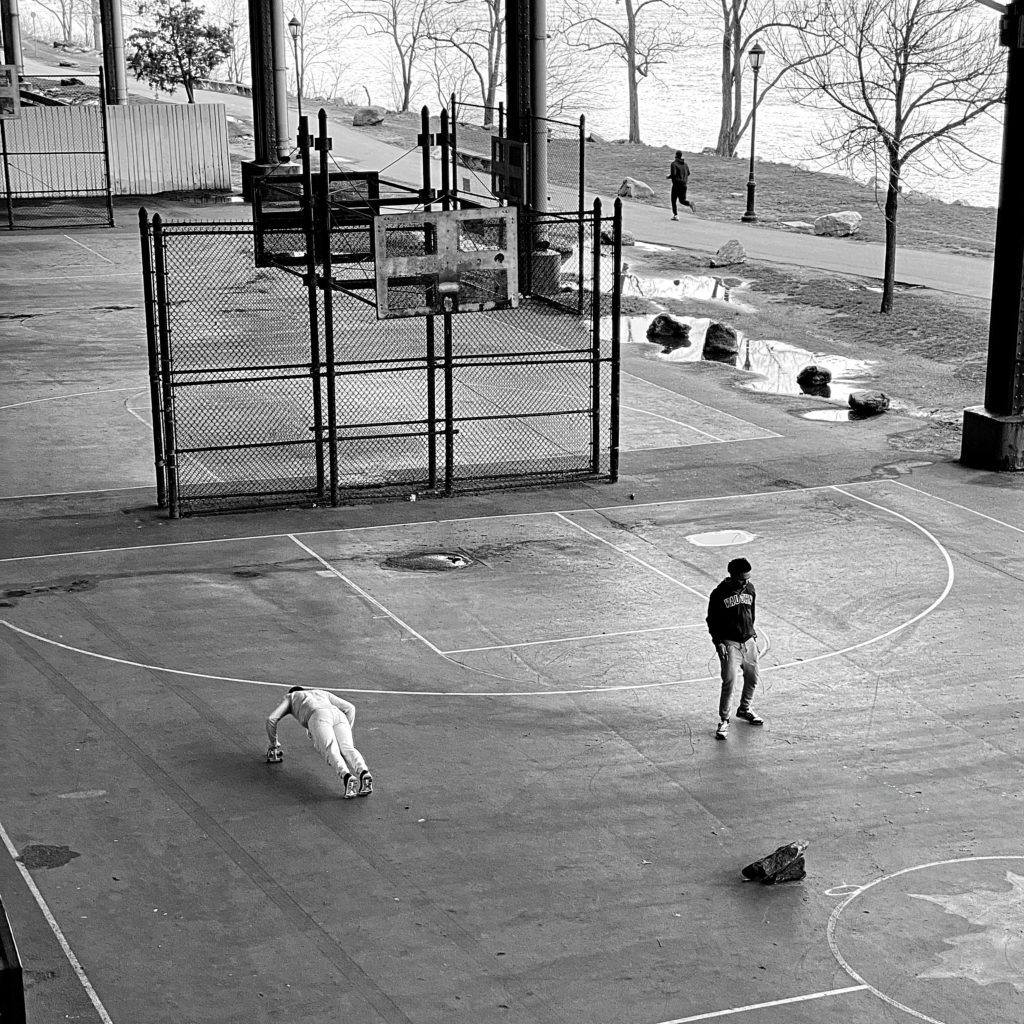
On my daily walks, I bought cappuccino from the few remaining open cafés, such as the Chipped Cup…

…and drank outside on street benches. There I could see most residents took the pandemic seriously, including this man with a mask and gloves…
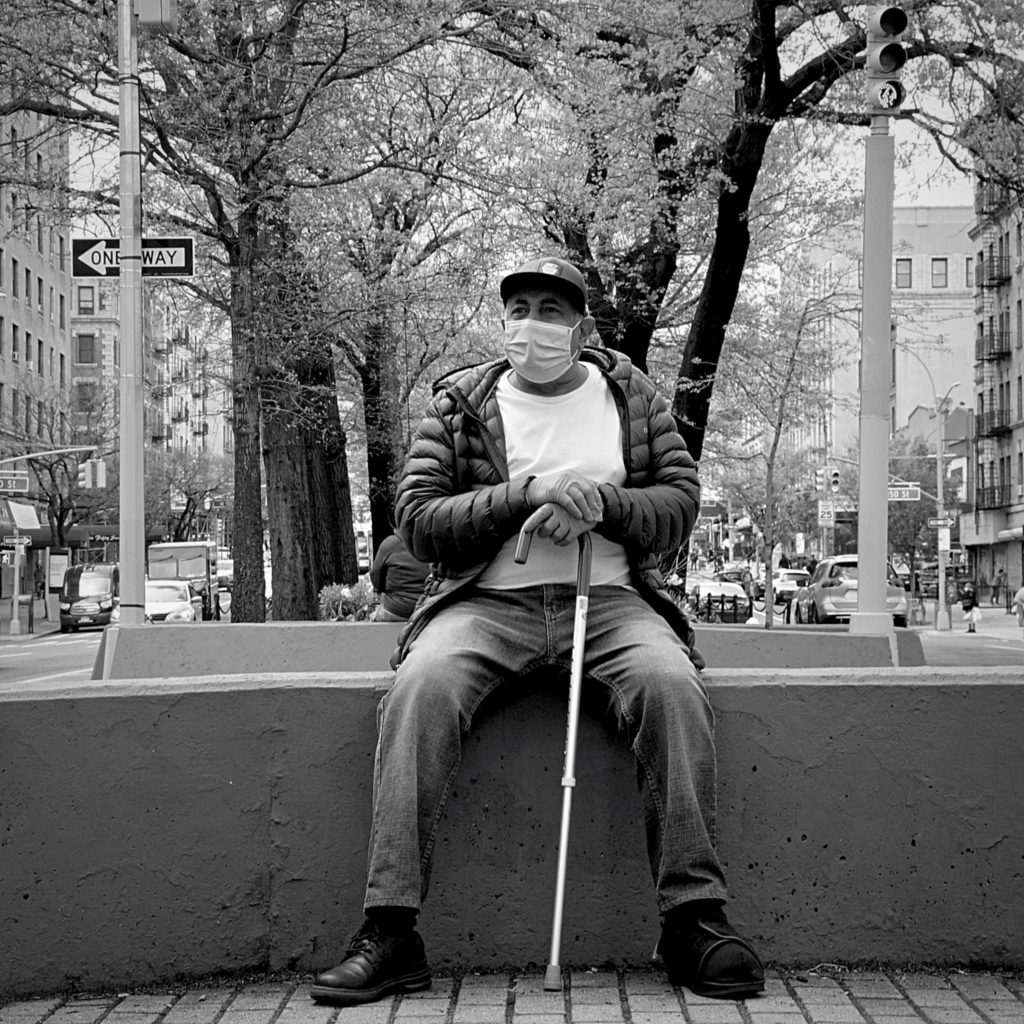
…and parents protecting themselves and their children.
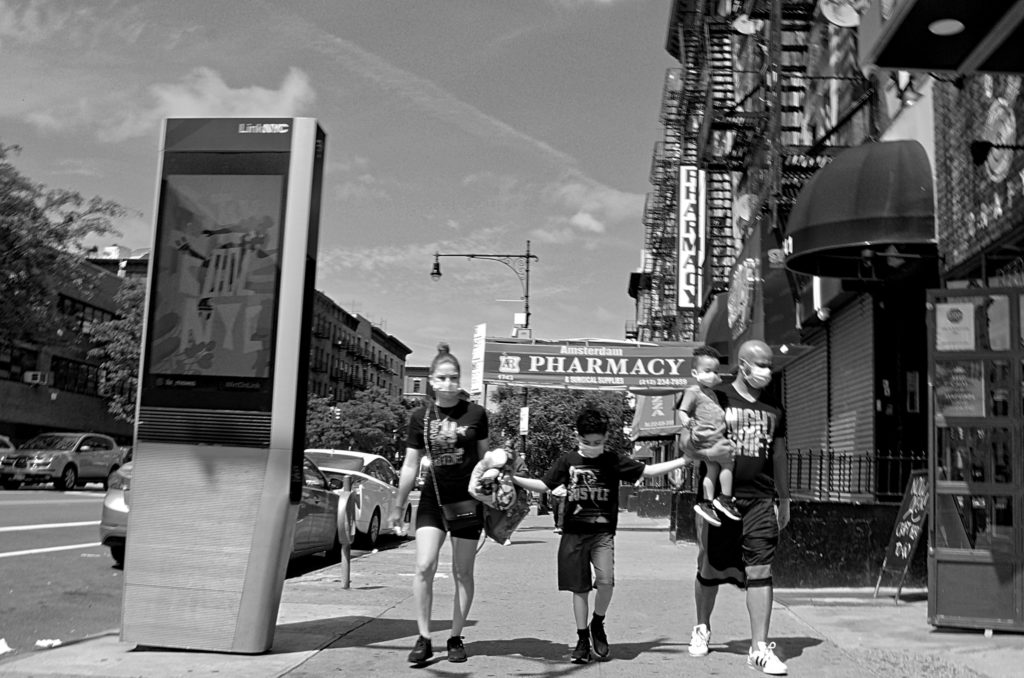
As groceries and pharmacies were essential businesses, they were open with lines waiting to enter. They limited the number in the store to lessen the chance of spreading Covid-19. Almost every day, we bought food to cook at home, as restaurants were closed except for delivery.

As groceries and pharmacies were essential businesses, they were open with lines waiting to enter. They limited the number in the store to lessen the chance of spreading Covid-19. Almost every day, we bought food to cook at home, as restaurants were closed except for delivery.
In mid-March, all schools were closed, so everyone that was a non-essential worker was at home or temporarily left the city. In late March, New Yorkers, like people all over the world, opened their doors and windows at 7pm to clap and bang pots to show appreciation for health care workers on the front lines of the coronavirus pandemic.
The infection rate, hospitalizations and deaths continued to increase in April and New York State recorded more Covid-19 cases than any foreign country. NYC hospitals were full. Patients were moved to a Navy hospital ship and a makeshift care facility at the Javits Convention Center.
In mid-May, the number of cases had started reducing and New York State permitted some outside businesses to open. On May 25, George Floyd, a 46-year-old black man, was killed in Minneapolis after a police officer knelt on his neck for almost ten minutes. In NYC, as in other places, there was an outpouring of demonstrations and marches supporting the Blacks Lives Matter movement, such as this one in Washington Square.
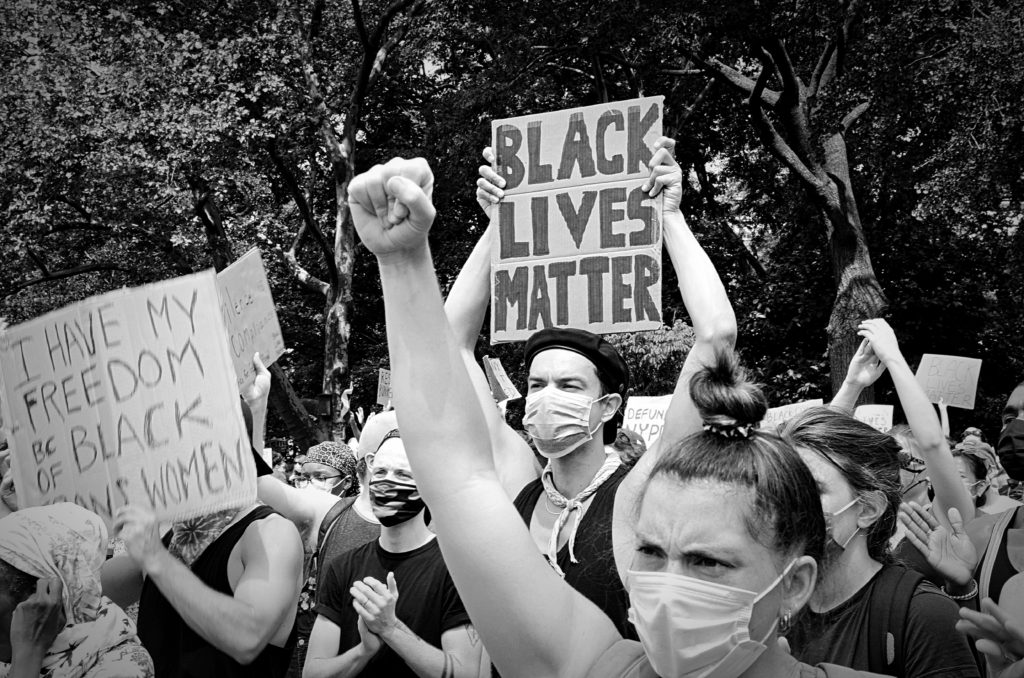
Almost all protestors wore masks and were outside, so fortunately there was no spike in the inflection rate.
In June, NYC opened more types of businesses and allowed certain social activities, including outdoor dining at restaurants with seating on the sidewalks and curbs, as with Le Monde Restaurant by Columbia University.
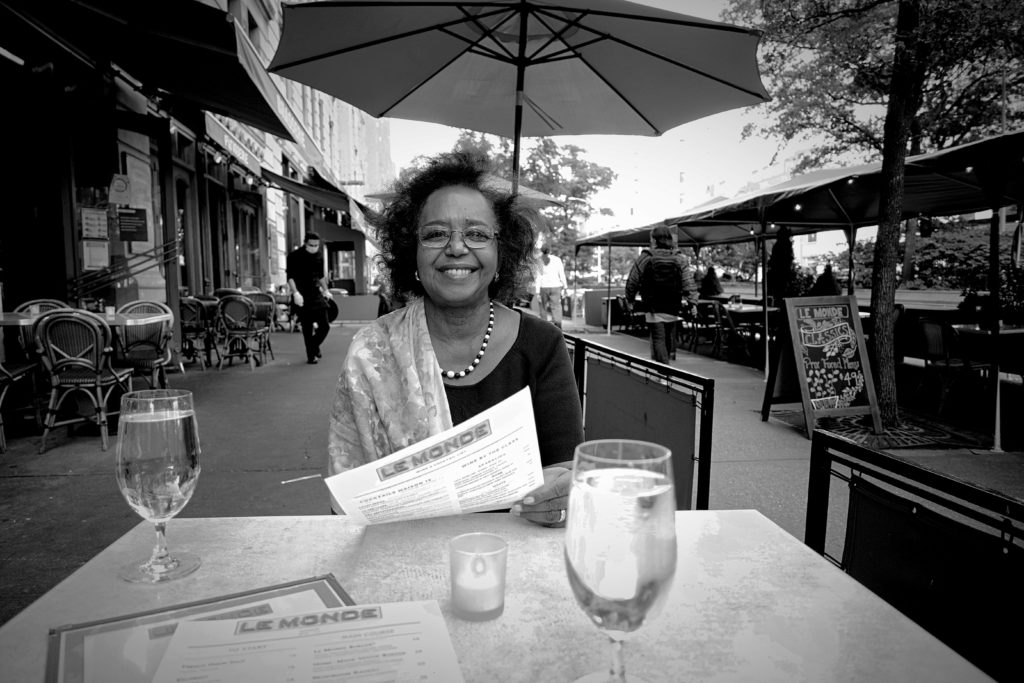
During this time, a sprinkle of tourists returned to NYC, as this couple in Times Square…
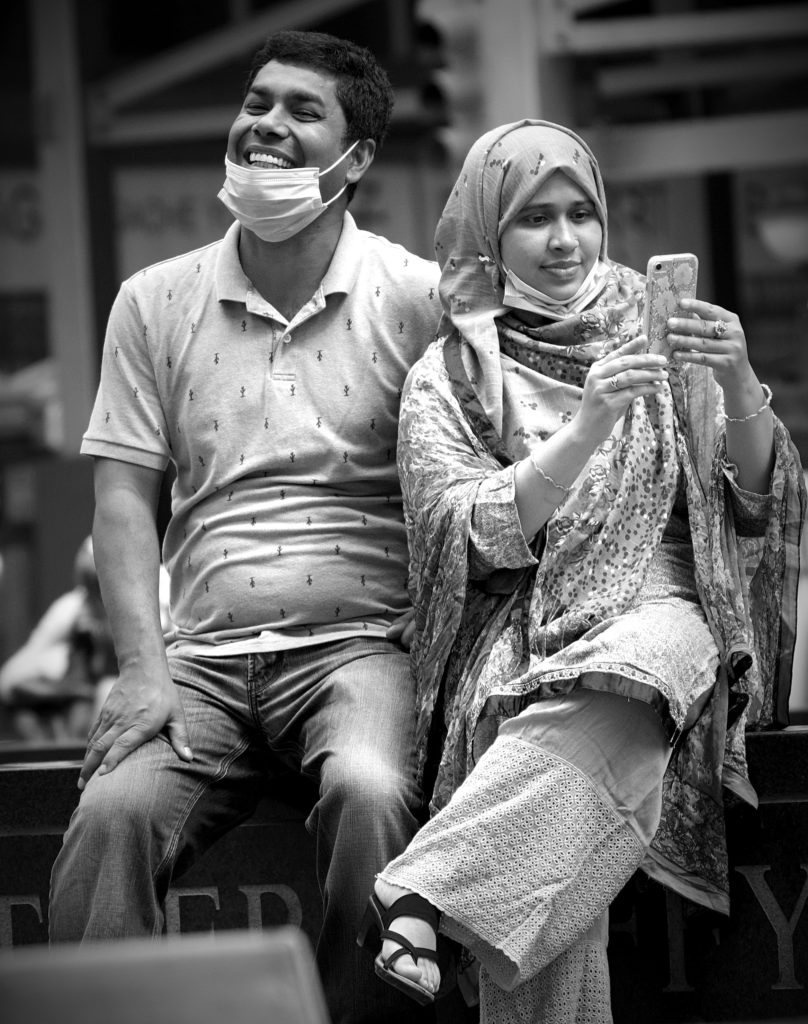
…and these folks by the bronze sculpture of the Charging Bull in the Wall Street area.

While on Wall Street, I encountered the intersection of the 9/11 terrorist attacks and the Covid-19 pandemic. The city closed the streets by the New York Stock Exchange to protect it from potential strikes and virtually everyone passing wore masks.
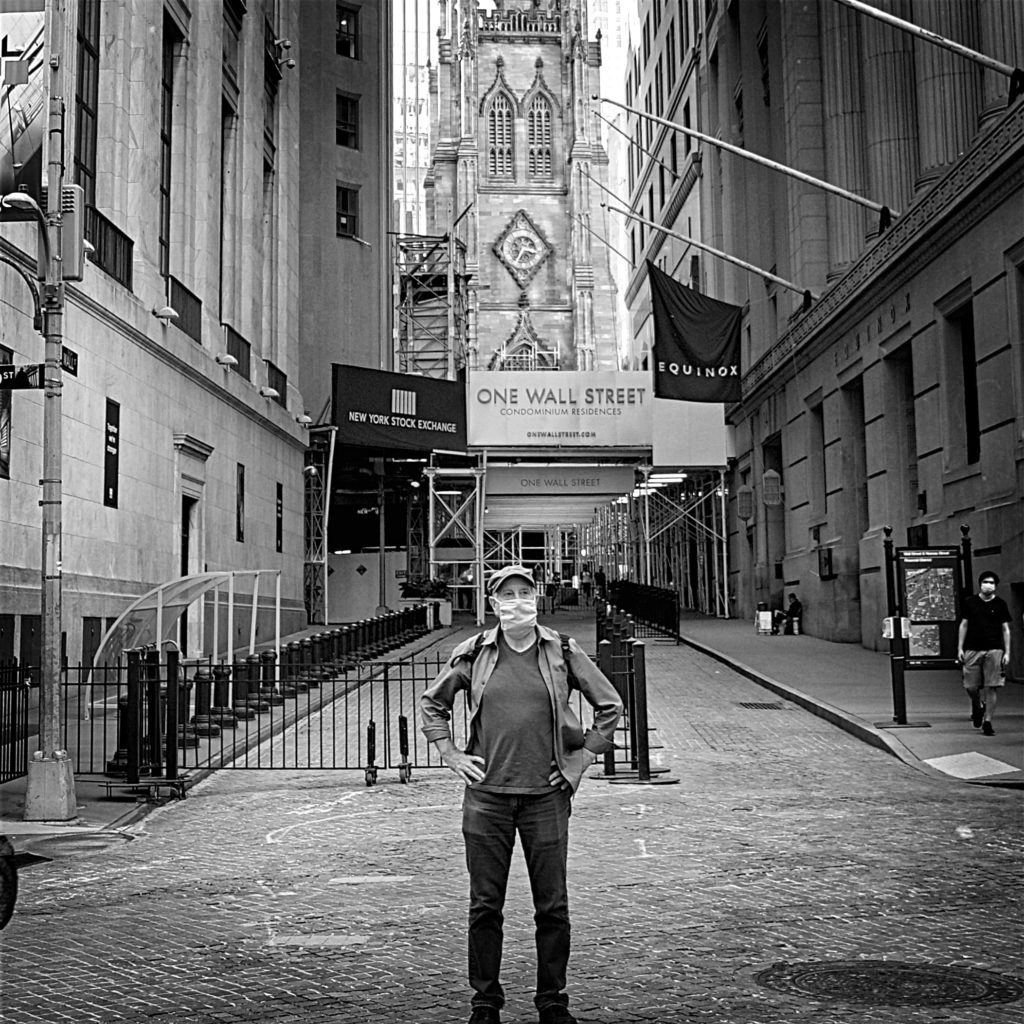
In September, I went to Washington Square in Greenwich Village where it was lively, but almost everyone wore masks and kept social distance from strangers. As this was done outside, maybe a balance was struck between not spreading the virus and living a satisfying life. Here I loved watching the skateboarders.

NYC is the live entertainment capital of the world. While that is mostly on hiatus, there are some great local musicians to see on the street, such as Unintended Consequences playing “Under the Sea” from Disney’s “The Little Mermaid.”
While NYC has made some great progress on managing Covid-19, it’s a constant struggle requiring strict vigilance. In October, some parts of Brooklyn, mainly in Hasidic Jewish neighborhoods, experienced a spike in infections. This was probably due to the tight-knit community practicing their religion and culture. However, New York State and NYC put pressure on the affected zip codes which has been somewhat effective. Here’s a man in Williamsburg, Brooklyn during Rosh Hashanah with prayer books and his shtreimel hat.
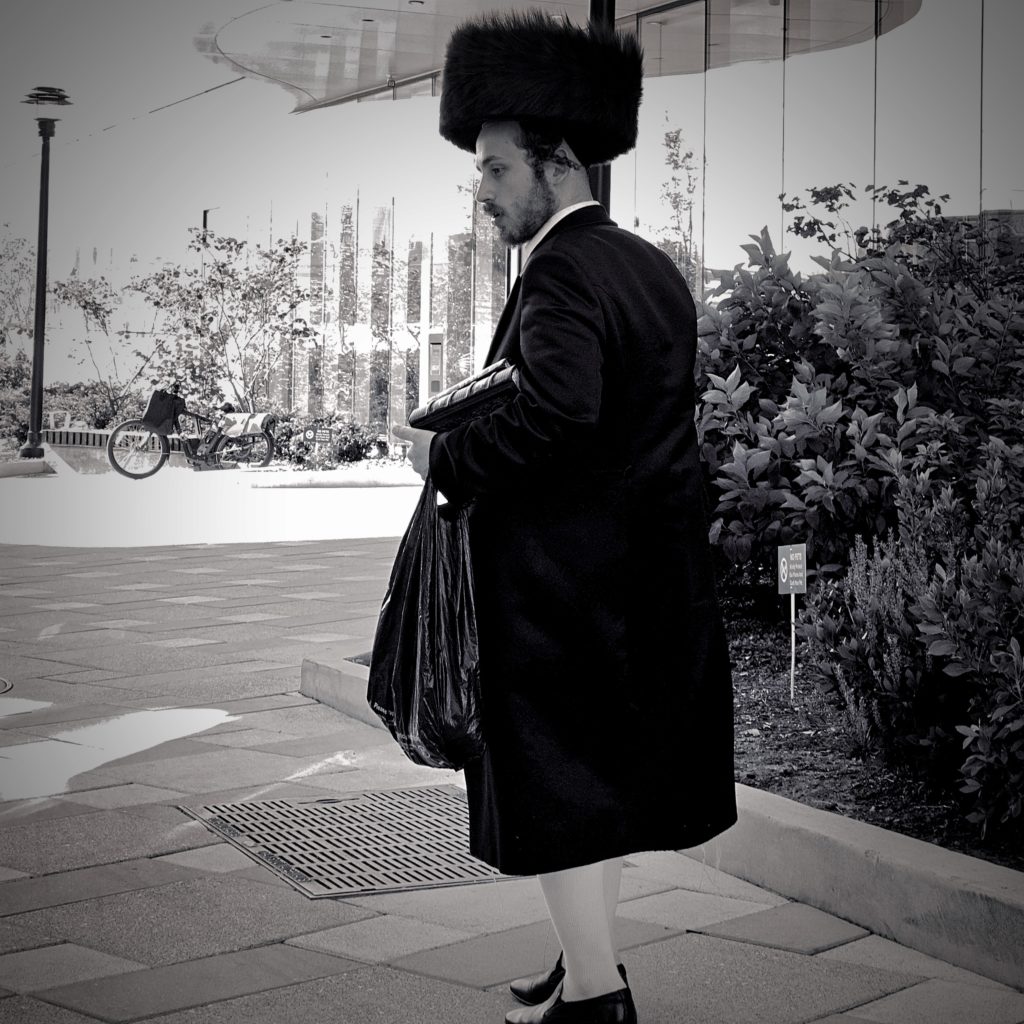
While NYC has made some great progress on managing Covid-19, it’s a constant struggle requiring strict vigilance. In October, some parts of Brooklyn, mainly in Hasidic Jewish neighborhoods, experienced a spike in infections. This was probably due to the tight-knit community practicing their religion and culture. However, New York State and NYC put pressure on the affected zip codes which has been somewhat effective. Here’s a man in Williamsburg, Brooklyn during Rosh Hashanah with prayer books and his shtreimel hat.
As I write this, the United States and Europe are experiencing another wave of infections. NYC is not a bubble and at least will be tangentially affected. On the other hand, it is a model of how a Western metropolis can manage a pandemic. The worldwide outbreaks have continued to curtail international travel. So I wait in NYC, as shown here in Washington Square.
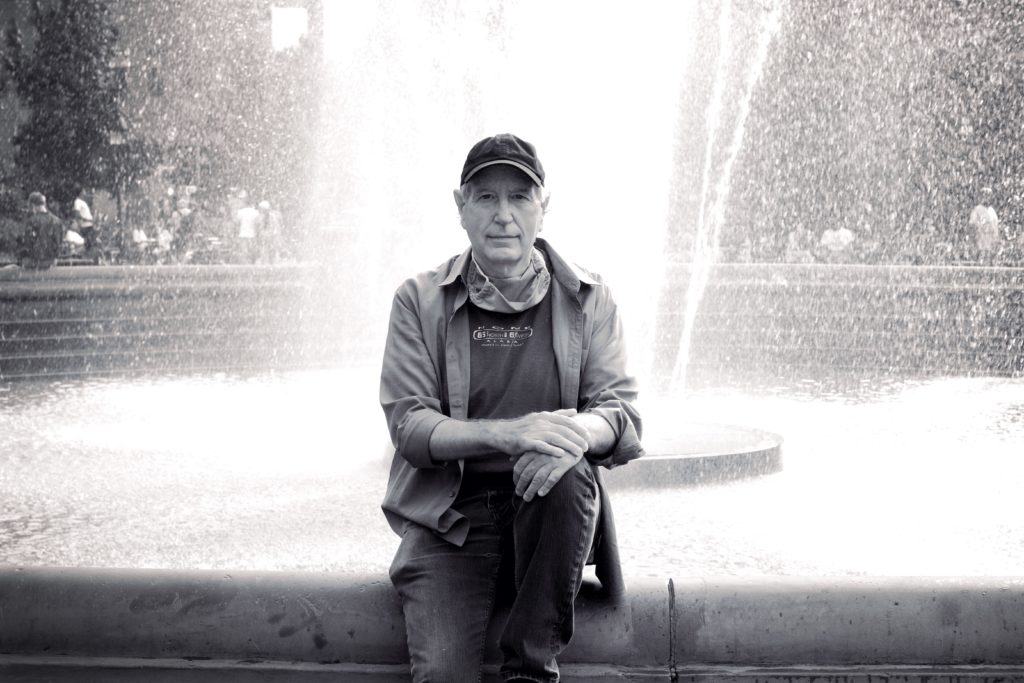
While confined in the City, I have time to think about my future. Even though I haven’t been able to travel internationally since February, I am still committed to travel to every country (only 92 to go, out of 197). More importantly, NYC will come roaring back for residents, businesses and visitors.

